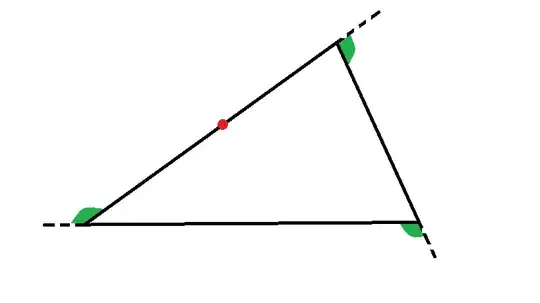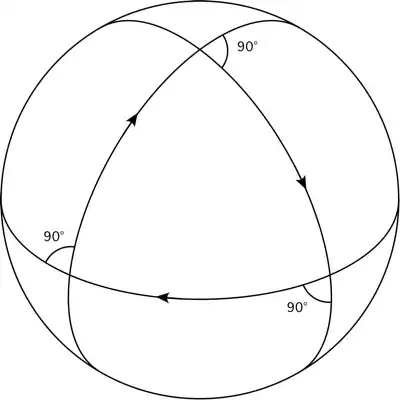If we take a full rotation to be $360^\circ$, then it seems that we can prove the following
 Starting from the red point, we walk clockwise along the triangle. At each vertex, we must turn through the green angles marked to proceed down the adjacent sides of the triangle. When we return to the red point, we will have turned through one full rotation. This means that the sum of the exterior angles is given as $360^\circ$, implying the interior angles of the triangle sums of $180^\circ$.
Starting from the red point, we walk clockwise along the triangle. At each vertex, we must turn through the green angles marked to proceed down the adjacent sides of the triangle. When we return to the red point, we will have turned through one full rotation. This means that the sum of the exterior angles is given as $360^\circ$, implying the interior angles of the triangle sums of $180^\circ$.
The fact that the angles of a triangle sum to $180^\circ$ is well known to be equivalent to the parallel postulate and this made me wonder whether if the fact that a full rotation being $360^\circ$ is also equivalent to the parallel postulate?
I avoided stating the question using "exterior angles of a triangle sums to $360^\circ$" and instead used the more ambiguous term "rotations" to emphasize the fact that rotations seem to be more general. We can for example show that the interior angles of a heptagram sum to $180^\circ$ by noting that three full rotations are made while "walking" thge heptagram. This should generalize to arbitrary closed polygons and seems stronger than the fact that the exterior angles sum to $180^\circ$.
In summary, I would be interested in knowing the connections that this technique has to the parallel postulate as well as if this technique is a "rigorous" way of finding the internal angles of more complex shapes such as the heptagram.
